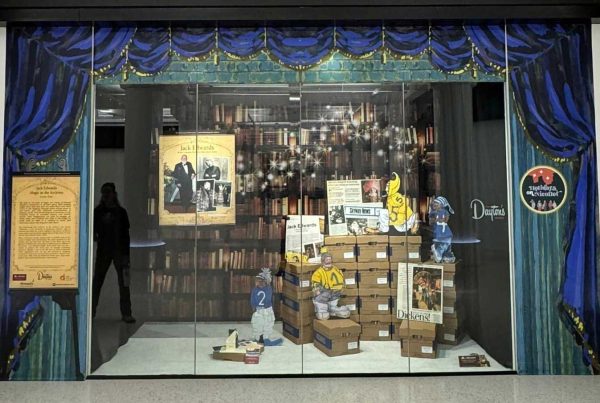Extended Hours
Thursday extended hours
Exhibit will be open 8:30 a.m. to 6:30 p.m. on May 15.
Saturday extended hours
Exhibit will be open 12:00 to 4:00 p.m. on May 3.
What: Downton Abbey: Behind the Scenes of Health and Illness
When: October 21, 2013 – May 16, 2014
Hours: Monday-Friday, 8:30 a.m. – 4:30 p.m.
Where: Wangensteen Historical Library of Biology and Medicine
5th floor of Diehl Hall
University of Minnesota
505 Essex Street SE
Minneapolis, MN 55455
Directions and location
Free and open to the public
To schedule formal tours for groups, email wanghist@umn.edu or call 612-626-6881.
About the exhibit
Medical themes are threaded throughout Masterpiece Theater’s wildly popular Downton Abbey, from Matthew’s temporary paralysis during the Great War to Sybil’s tragic death from eclampsia.
The Wangensteen Historical Library of Biology and Medicine’s holdings come together in “Downton Abbey: Behind the Scenes of Health and Illness” to illuminate the medicine of Edwardian England. The exhibit explores such themes as nursing, surgery and combat injuries in WWI, maternal and child health, and household medicine using books and artifacts from the library’s extensive early 20th century collections.
In “Downton Abbey: Behind the Scenes of Health and Illness,” visitors to the Wangensteen Historical Library of Biology and Medicine will re-live and learn more about some of the most stressful moments in Masterpiece Theater’s wildly popular Edwardian drama. The history of medicine is an exciting lens for the show’s viewers because it lends insight to both every day and exceptional hopes regarding fears about the body, family, and community.
Early 20th century saw many changes in medicine
The beginning of the 20th century introduced countless changes in medical practice. Germ theory was increasingly accepted, so sanitation was greatly improved and surgeries were more successful. Progressively sophisticated chemistry led both to more effective medicines and more effective chemical warfare. For this and other reasons, World War I — The Great War — introduced new problems and led to novel medical techniques. The medical profession itself was in the midst of a professional revolution because of a heightened interest in specialization and the decreasing status of general, or family, doctors.
For the general populace, the shifting power of the upper class stressed concerns about heredity and inheritance. It also encouraged the lower classes to, at times, work toward a higher social station. All, however, experienced technological innovations like electric lights, telephones and automobiles that enhanced daily life, but led to new and more dangerous bodily threats.
Exhibit features Wangensteen Library collections
Downton Abbey has introduced many of these medical topics to its viewers; “Downton Abbey: Behind the Scenes of Health and Illness” will continue to explore these instances of bodily trial through books and artifacts found in the Wangensteen Library’s collections. The exhibit will feature cookbooks, surgical manuals and instruments, newspapers, photographs and drawings, and clothing and other accessories from Edwardian England that will highlight the experiences and concerns of 19th and 20th century medicine.




